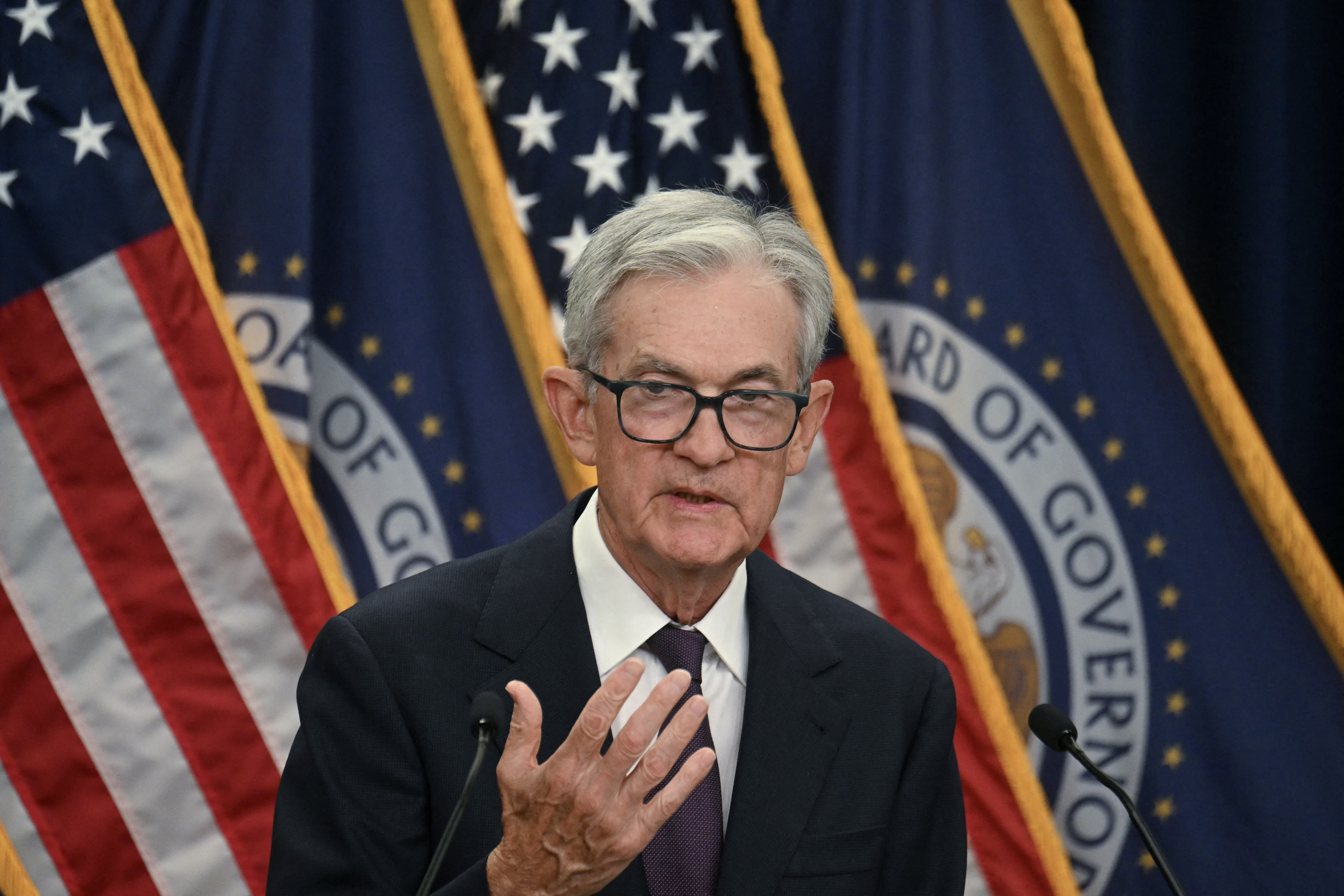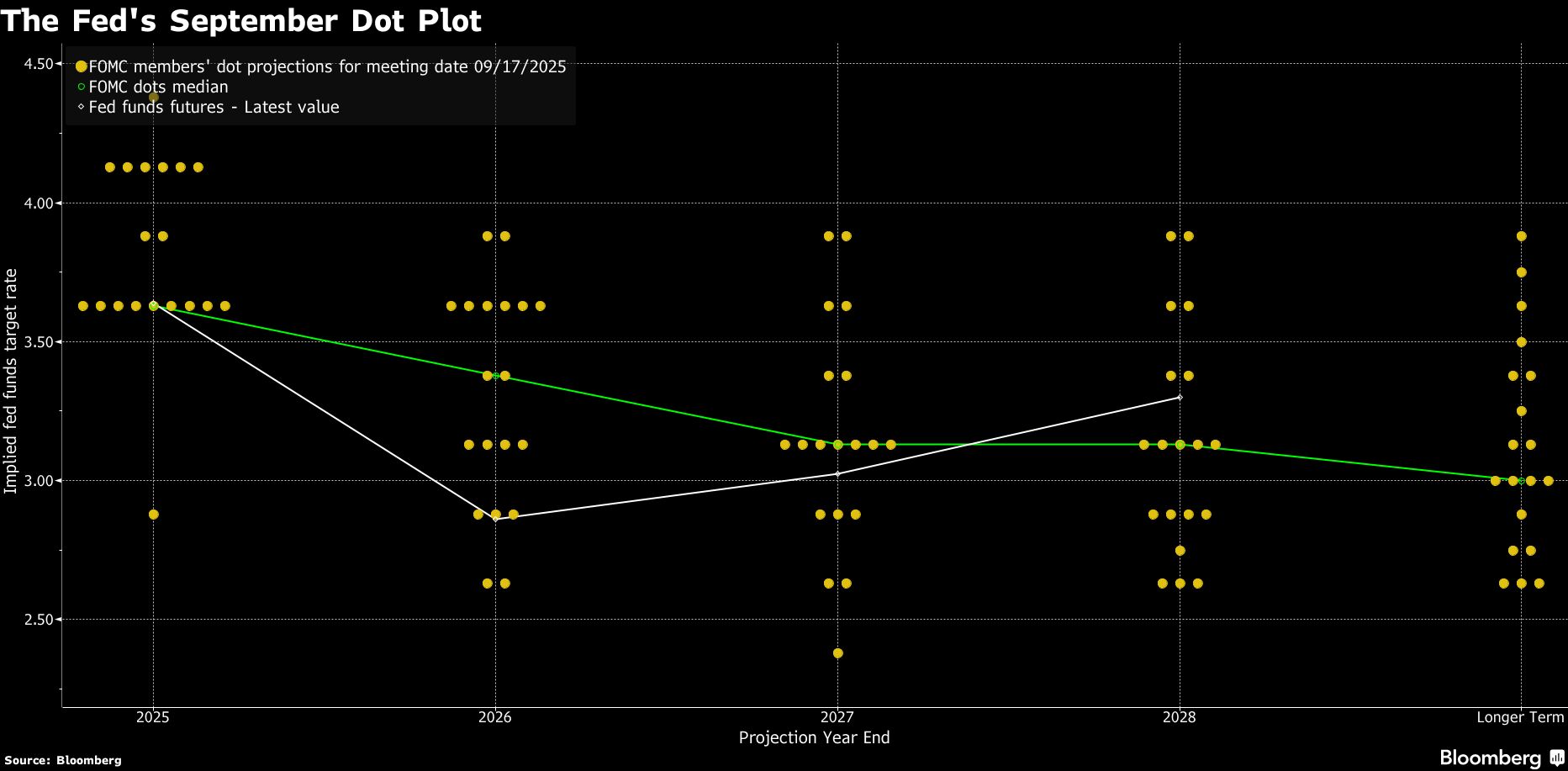
Federal Reserve Chair Jerome Powell signaled the US central bank is on track to deliver another quarter-point interest-rate cut later this month, even as a government shutdown significantly reduces its read on the economy.
Powell, in a speech Tuesday at the National Association for Business Economics annual meeting, said that the economic outlook appeared unchanged since policymakers met in September, when they lowered interest rates and projected two more this year.
“A rate cut in October is done,” said Julia Coronado, founder of the research firm MacroPolicy Perspectives and a former Fed economist. “Nothing has changed the perspective that there’s still downside risks to the labor market.”
Powell pointed several times to the low pace of hiring and noted that it may weaken further.
“You’re at a place where further declines in job openings might very well show up in unemployment,” Powell said during a question-and-answer session following his prepared remarks. “You’ve had this amazing time where you came straight down, but I just think you’re going to reach a point where unemployment starts to go up.”
Expectations for a rate cut in October were little changed after Powell’s remarks. Investors see a nearly 100 percent chance of a reduction, according to federal funds futures contracts.
The Fed’s September cut to a target range of 4-4.25 percent was their first since December, and followed a sharp summer slowdown in hiring. Still, the unemployment rate has so far remained relatively low, ticking up to 4.3 percent in August. The Labor Department delayed the release of the September payrolls report due to the ongoing government shutdown, but has recalled staff to prepare September consumer price index data for release later this month.
ALSO READ: US Fed lowers interest rates, signals more cuts ahead; Miran dissents
“Right now, the risks to the employment side of the mandate are rising,” Yelena Shulyatyeva, senior US economist at the Conference Board, said on the sidelines of the NABE conference. “That’s what is going to drive the decision in the near term.”

The Fed is scheduled to meet again Oct 28-29. Last month, the median projection from its 19 policymakers pointed to two more rate cuts this year. But nine officials saw one or fewer cuts as appropriate.
That division among policymakers is also making Powell more cautious about the path for rates next year, said Diane Swonk, chief economist at KPMG.
“Those are the cues of, ‘We don’t really know where we’re going longer term,’” she said.
The absence of a full suite of official economic data has ramped up concern that the Fed won’t get a clear read on how the economy is evolving, increasing the potential for policy mistakes.
It’s a particularly difficult time for the Fed to go without data. Its mandates of price stability and maximum employment are pulling officials in opposite directions, with the labor market cooling while inflation remains above the central bank’s 2 percent target.
Powell said he and his colleagues are looking to alternative, private-sector data sources but emphasized the importance of government data, which he called the “gold standard”.
“We don’t expect that we’d be able to replace the data we’re not getting,” Powell said. “We’ll start to miss that data, and particularly the October data. If this goes on for a while they won’t be collecting it, and it could become more challenging.”
READ MORE: US govt shutdown enters third week as Treasury warns of economic toll
Powell also signaled the central bank may stop shrinking its balance sheet in the coming months, an important shift necessary to preserve liquidity in overnight funding markets.



